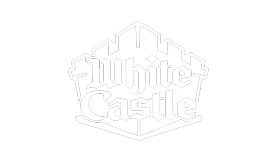Problem
Airtable limitations stalled scalability
A Europe-based company specializing in custom drive solutions for global industrial applications has been delivering precision-engineered products since 1978. But behind its technical expertise, the organization struggled to manage projects and operations in a cohesive, scalable way. Teams cycled through tools like Excel, Airtable, and SAP in search of a flexible solution—but none provided the agility or usability they needed. Airtable, in particular, posed significant challenges: databases couldn’t be linked effectively, data was frequently duplicated, and formula complexity made the system inaccessible for broader team adoption.
Without a centralized source of truth, each department—from sales to engineering—managed workflows independently, resulting in silos, inconsistent reporting, and disconnected processes. Project tracking was ad hoc, relying on personal workarounds that varied from team to team. As the organization sought to scale and standardize its operations, these fragmented systems quickly revealed their limitations.
Q1
Solution
Empowerment from the ground up with minimal training
The organization implemented SmartSuite initially as a project management tool—but the ease of use and intuitive interface quickly encouraged cross-functional adoption. Key outcomes included:
- Department-Level Flexibility: Construction, electronics, sales, and management teams each created tailored SmartSuite solutions for their needs.
- CRM Integration: A full CRM system was built, replacing disparate tracking tools and enabling consistent contact and deal management.
- Meeting Management & Documentation: Leadership meetings were logged in SmartSuite with agendas, decisions, and task tracking, improving executive visibility and alignment.
- Automations & Make Integration: The oganization configured time-based backups via Make to export SmartSuite data weekly—critical for meeting ISO medical compliance safeguards.
- Scalability Without Training: Most employees could start using SmartSuite with minimal guidance. Automations and workflows were created without engineering support, enabling bottom-up innovation.
Q2
Results
Operating with consistent clarity and coordination
SmartSuite quickly became the default operations platform at the comapny, empowering teams to work with more clarity, coordination, and accountability. Over 27 users adopted the system across 6+ departments. Employees praised its intuitive design, while leadership saw significant improvements in project tracking and CRM data structure.




.png)

-min.jpeg)
-min.png)
-min.png)

%2520(1).jpeg)


%2520(1).jpeg)


-min.jpeg)
-min.png)
-min.png)
.jpeg)
.png)
.png)
.jpeg)
.png)
.png)
-min.jpeg)


.jpeg)
.png)
.png)



-min.jpeg)
-min.png)
-min.png)
-min.jpeg)
-min.png)
-min.png)

.png)
.png)



-min.jpeg)
.png)
.png)
-min.jpeg)
-min.png)
-min.png)



-min.jpeg)
-min.png)
-min.png)



-min.jpeg)
-min.png)
-min.png)
-min.jpeg)
.png)
.png)
.jpeg)
.png)
.png)
-min.jpeg)
-min.png)
-min.png)



-min.jpeg)
-min.png)
-min.png)
-min.jpeg)
-min.png)
-min.png)

-min.png)
-min.png)
-min.jpeg)
-min.png)

-min.jpeg)
.png)
.png)
%2520(1).jpeg)



.png)
.png)
%2520(1).jpeg)
.png)
.png)
-min.jpeg)
%2520(1).png)
%2520(1).png)



%2520(1).jpeg)
%2520(1).png)
%2520(1).png)
%2520(1).jpeg)
.png)
.png)

.png)
-min.png)
-min.jpeg)
-min.png)
-min.png)



-min.jpeg)
-min.png)
-min.png)
.jpeg)
.png)
.png)
-min.jpeg)
-min.jpeg)


-min.jpeg)
-min.png)
-min.png)
-min.jpeg)
-min.png)
-min.png)
-min.jpeg)
-min.png)
-min.png)
%2520(1).jpeg)
.png)
.png)
-min.jpeg)
.png)
.png)
-min.jpeg)
-min.png)
-min.png)



-min.jpeg)
-min.png)
-min.png)
-min.jpeg)
.png)
.png)



%2520(1).jpeg)
.png)
.png)
.jpg)

%2520(1).jpeg)









.jpg)
-min.jpeg)
-min.png)
-min.png)



.jpg)
.png)
.png)
-min.jpeg)
-min.png)
-min.png)

.png)
.png)
.jpg)
.jpg)
.jpg)
.jpg)
















.png)
.png)






-min.jpeg)
-min.png)
-min.png)
-min.jpeg)
.png)
.png)
.jpg)
.jpg)
.jpg)
.jpg)



.jpg)
-min.png)
-min.png)
.jpg)
.jpg)
.jpg)
%20(1).jpg)
-min.png)
-min.png)
.jpg)
.jpg)
.jpg)
.jpg)
.jpg)
.jpg)
.jpg)
-min.jpeg)
-min.png)
-min.png)
.jpeg)
.png)





